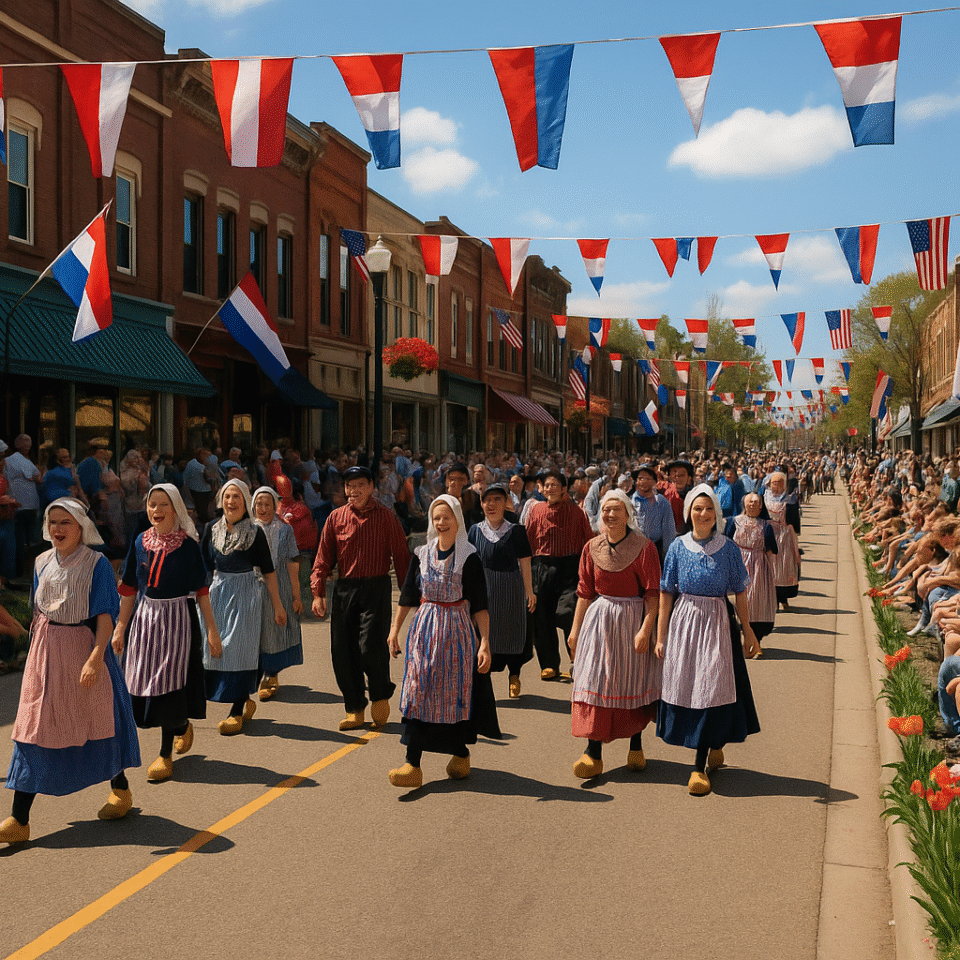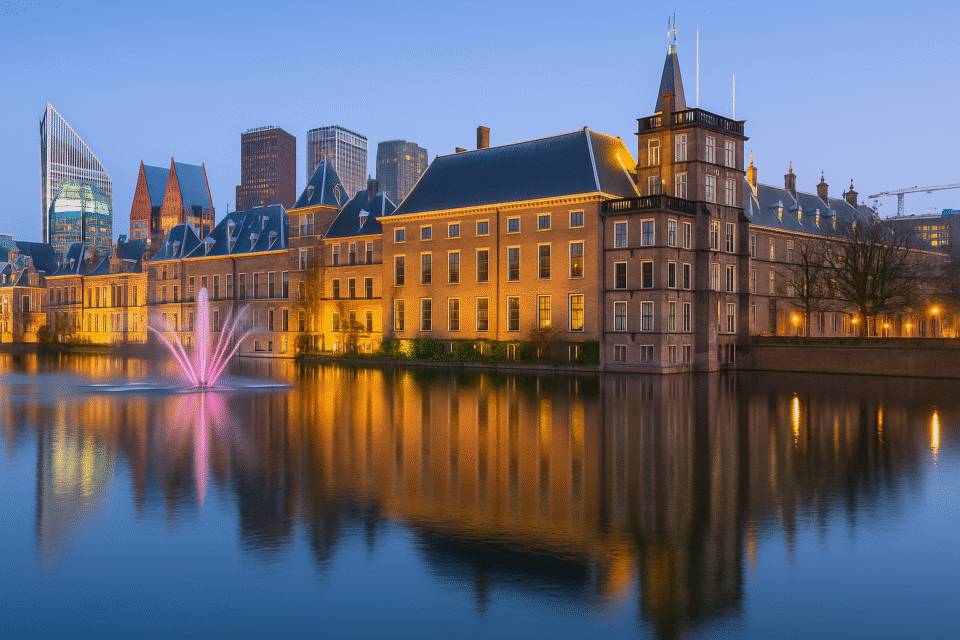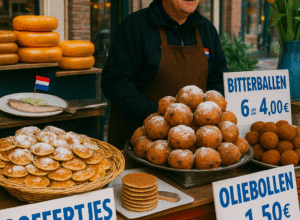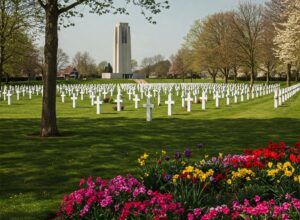Where to Experience Netherlands Culture Without Crossing the Atlantic
For Americans curious about Dutch culture before committing to a Netherlands adventure, these stateside communities offer an authentic taste of Dutch heritage right here in the USA. From windmills to tulip festivals, discover how Dutch immigrants shaped American towns while preserving their unique cultural identity.
Many Americans planning a move to the Netherlands don’t realize they can sample Dutch culture much closer to home. Throughout the United States, pockets of distinctly Dutch heritage have thrived for generations, offering a unique cultural fusion that both honors traditional Dutch customs and embraces American identity. These communities—with their windmills, tulip festivals, and Dutch-inspired architecture—provide the perfect opportunity to dip your toes into Dutch culture before taking the plunge across the Atlantic.
A Tapestry Woven with Orange: The History of Dutch Immigration to America
The story of Dutch immigration to America is a long and fascinating one, stretching back to the very beginnings of European colonization on the North American continent. While often overshadowed by the English presence, the Dutch played a crucial role in shaping the early landscape and culture of what would eventually become the United States.
The initial Dutch foray into North America came in the early 17th century, driven by the burgeoning Dutch Golden Age, a period of unparalleled economic and cultural prosperity. The Dutch West India Company, a powerful trading entity, established New Netherland in 1614, claiming territory stretching from present-day Connecticut to Delaware. The heart of this colony was New Amsterdam, founded in 1624 on the southern tip of Manhattan Island – the city we know today as New York City.
New Amsterdam wasn’t conceived as a bastion of Dutch culture and language, but rather as a vital trading hub. The Dutch West India Company prioritized commerce over strict religious or ethnic homogeneity, leading to a remarkably diverse population. Settlers from various European countries, including Germans, Scandinavians, French Huguenots, and even some English, were welcomed to New Netherland. This cosmopolitan atmosphere distinguished it from the more homogeneous English colonies to the north and south.
The Dutch influence in New Netherland went beyond simply establishing a trading post. They introduced concepts like religious tolerance, a relatively democratic (for the time) governing system through the patroon system (though ultimately unsuccessful), and a focus on commercial enterprise. Features of early New York City, such as the grid street layout, the name “Brooklyn” (from Breukelen), and even the character of Santa Claus (derived from Sinterklaas), can all be traced back to Dutch origins.
However, Dutch rule in New Netherland was relatively short-lived. In 1664, the English, under the command of the Duke of York (later King James II), seized control of the colony, renaming New Amsterdam to New York. While the Dutch initially resisted, the company’s focus on profit meant they were unwilling to commit the resources necessary to defend the territory.
Despite the English takeover, the Dutch legacy persisted. Many Dutch settlers remained, integrating into the new English colony and continuing to exert influence on its culture and economy. Dutch language and customs survived in various communities, particularly in rural areas along the Hudson River.
Following the initial wave of settlement in the 17th century, significant waves of Dutch immigrants arrived in the US throughout the 19th and early 20th centuries. Several factors drove this renewed migration:
- Religious Persecution: Some Dutch immigrants, particularly those affiliated with the Seceder Church (Afscheiding), sought religious freedom in America after facing discrimination and persecution in the Netherlands.
- Economic Opportunity: The Netherlands experienced periods of economic hardship, particularly in the agricultural sector. The promise of fertile land, better wages, and greater economic opportunities attracted many Dutch families to the American Midwest.
- Land Availability: The vast expanses of available land in the American Midwest, particularly in states like Michigan, Iowa, and Wisconsin, proved irresistible to Dutch farmers seeking to build a better future for their families.
These 19th and 20th-century Dutch immigrants, unlike their 17th-century predecessors, often sought to establish close-knit communities where they could preserve their language, culture, and religious traditions. This led to the formation of distinct Dutch-American enclaves, particularly in the Midwest.
Finding “Home Away From Home”: Top US Towns with Strong Dutch Roots
So, where can you find the highest concentration of Dutch heritage in the United States today? While Dutch ancestry is scattered throughout the country, several towns and regions stand out for their particularly strong ties to the Netherlands:
Holland, Michigan
Without a doubt, Holland, Michigan is the epicenter of Dutch-American culture in the United States. Founded in 1847 by Dutch Calvinist immigrants led by Reverend Albertus van Raalte, Holland maintains a strong connection to its Dutch heritage. The annual Tulip Time Festival, a celebration of Dutch culture with millions of tulips blooming in vibrant colors, draws visitors from around the world. The town also boasts a replica of a Dutch windmill, Windmill Island Gardens, a Dutch Village theme park, and numerous businesses with Dutch names. The influence of the Christian Reformed Church, a denomination with deep roots in Dutch Calvinism, is also prominent.
Pella, Iowa
Another significant Dutch settlement in the Midwest, Pella, Iowa was founded in 1847 by Dutch immigrants seeking religious freedom. The town’s name, derived from a biblical reference to a refuge, reflects the settlers’ desire to create a safe haven for their faith. Pella’s historical downtown, with its Dutch architecture, Molengracht canal, and annual Tulip Time Festival, showcases its Dutch heritage. Pella also boasts the Vermeer Windmill, a working replica of a Dutch windmill. The town’s Central College has historic Dutch ties and continues to support the local heritage.
Orange City, Iowa
As its name suggests, Orange City, Iowa has strong ties to the Netherlands and the House of Orange. Founded in 1870 by Dutch immigrants, the town celebrates its Dutch heritage through its architecture, cultural events, and vibrant community spirit. The annual Tulip Festival is a major attraction, featuring traditional Dutch costumes, dancing, and of course, breathtaking displays of tulips. Northwestern College, located in Orange City, has a strong Dutch Reformed tradition and contributes to the town’s intellectual and cultural life.
Zeeland, Michigan
Situated near Holland, Michigan, Zeeland, Michigan is another Dutch-American community with deep roots in the Netherlands. Founded in 1847 by Dutch immigrants, Zeeland retains a strong sense of its Dutch heritage through its churches, cultural organizations, and community events. The city maintains strong ties to its sister city of Borssele in the Netherlands.
Sioux Center, Iowa
Located in northwest Iowa, Sioux Center, Iowa is another town with a significant Dutch-American population. Founded in the late 19th century by Dutch immigrants, Sioux Center maintains a strong connection to its Dutch Reformed heritage. The town is home to Dordt University, a Christian Reformed institution that plays a vital role in the community’s cultural and intellectual life.
New York City, New York
While the Dutch legacy in New York City is often obscured by the city’s diverse modern identity, traces of New Amsterdam remain. Street names like Wall Street (originally Waal Straat) and Broadway (originally Breede Wegh) are reminders of the Dutch colonial period. The Dyckman Farmhouse Museum in northern Manhattan provides a glimpse into Dutch colonial life. And, of course, the legend of Santa Claus (Sinterklaas) continues to be celebrated during the holiday season.
Albany, New York
Further up the Hudson River, Albany, New York, once known as Beverwijck, holds significant Dutch historical value. It was established as a fur trading post in 1614 and served as an important hub in New Netherland. Historical sites and museums, though fewer than those in New York City, offer insights into the region’s Dutch colonial past. You can learn more about Albany’s history at the Albany Institute of History & Art.
Planning Your Visit to America’s Dutch Enclaves
If you’re considering a move to the Netherlands or simply want to experience Dutch culture closer to home, visiting one of America’s Dutch heritage towns offers a unique cultural immersion opportunity. Here’s how to make the most of your visit:
Best Times to Visit
- Spring (April-May): This is the prime season for Tulip Time Festivals across Dutch-American communities. Holland, Michigan’s festival typically runs the first week of May, while Pella and Orange City in Iowa hold their celebrations in early May as well. These festivals feature millions of blooming tulips, traditional Dutch dancing, parades, and authentic food.
- December: Experience Sinterklaas celebrations, the Dutch precursor to Santa Claus traditions. Some communities hold parades and special events that showcase this uniquely Dutch holiday tradition.
- Summer: While not specifically Dutch-themed, summer offers pleasant weather for exploring outdoor attractions like windmills, gardens, and architectural highlights in these communities.
Travel Tips
- Book accommodations early if visiting during Tulip Time, as these small towns fill up quickly during festival season.
- Combine visits to multiple Dutch communities if possible. The Michigan sites (Holland and Zeeland) are close to each other, as are the Iowa communities (Pella, Orange City, and Sioux Center).
- Research specific festival dates as they change slightly each year based on when tulips are expected to bloom.
- Pack for variable weather in spring, as Midwestern conditions can change rapidly during tulip season.
Conclusion: A Bridge Between Two Worlds
The story of Dutch immigration to America is a testament to the enduring power of culture, faith, and the human spirit. These towns provide a bridge between the Netherlands and America—a blend of tradition and hospitality.
Whether you’re exploring your heritage, planning a future move, or just craving stroopwafels and tulips, these communities offer a vibrant slice of Dutch life without ever leaving American soil.
Mark your calendar for Tulip Time, pack your camera, and enjoy a passport-free cultural journey.








